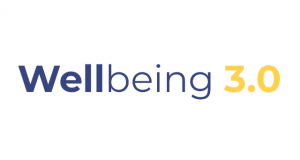
Leading with Purpose: Model
First in a three-part series, we’ll consider the first pillar of Kumanu Purposeful Leader Experience: Model. How can leading with purpose in your life, work, and leadership role encourage others to live their own purpose?
Setting the Example: How Purpose Helps Leaders Lead
Former United States Ambassador to the United Nations Adlai Stevenson once said “It’s hard to lead a cavalry charge if you think you look funny on a horse.” In other words, leadership begins with having a strong sense of one’s self and purpose above all else. And without this crucial leadership quality, your capacity as a leader can be compromised.
Developing an authentic sense of self is the first of three pillars upon which great leadership is activated. These pillars are broad enough to apply to any kind of leader—the archetype of a “boss,” but also teachers, politicians, orchestra conductors, and more—yet specific enough for there to be concrete skills to focus on improving.
The three pillars are modeling your own purposeful behaviors, empowering those you lead to develop their own purpose and align with it, and connecting everyone’s personal purposes to both their work and their organization’s purpose, mission and values.
What Does It Mean to "Model" Purposeful Leadership?
Modeling purpose means making conscious choices about living your purpose in an authentic and visible way. Authentic leaders are transparent about successes and failures and use them to lead more purposefully in the future. And it also means acknowledging the opportunity you have to serve as a role model for those you oversee and showing them how to live purposefully.
Research from the Chartered Institute of Personnel and Development uncovered that when leaders model purpose, their employees have higher levels of organizational commitment, perform better, and are less likely to quit. Being led by a purpose-driven leader also provides clarity to employees, according to customer experience consultant Bruce Temkin. As a result, “employees know where they’re heading and they feel more confident and empowered.”
The Spillover Effects of Modeling Purposeful Leadership
Beyond showing your employees what living with purpose looks like, modeling purpose-driven leadership is important because so many other leadership qualities stem from leading with purpose. Purposeful Leaders are more passionate about their work and come across as more genuine. One HBR article states that “When executives approach development in [a] purpose-driven way,” they “become more energized in their current roles.” This energy is transferred onto the people they are leading, who mirror the level of excitement of their leader. The author also suggests that purpose-driven leaders are better at setting goals for themselves and their team.
Purposeful Leaders benefit the organization they are a part of, too. Research by EY discovered that purposeful organizations with active leadership buy-in outperform other companies financially in the short and long term. Additionally, they “are better equipped to deal with the fast-changing, competitive environment.”
Being purpose-driven can even serve as a surrogate for other leadership traits. The genuineness that a purpose-driven leader gives off cannot be overstated. Susan Tardanico, the CEO of the Authentic Leadership Alliance, says that communication may not even be as important as long as a leader comes across as genuine: “Forget about eloquence — worry about being real.” Of course, these organizational benefits are in addition to all of the well-documented benefits of purpose for the individual, from better brain health to increased motivation to improved physical and emotional wellbeing.
Stay Tuned for the Second Pillar: Empower
So, now that you know how to model the behaviors associated with Purposeful Leadership and know some of the benefits that come with it, join us next time to learn how to empower your people to live with purpose, too.
